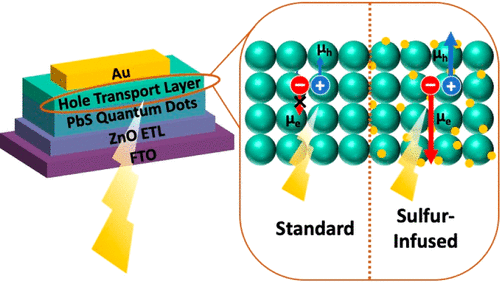New Hole Transport Materials for Colloidal Quantum Dot Solar Cells
Team: Nanoenergy Lab Hole Transport Materials Subgroup
- Program: Electrical and Computer Engineering
- Course:
Project Description:
Lead Sulfide Colloidal Quantum Dots are an attractive material for solar cells because solar cells based on them are thin, flexible, lightweight, and can absorb efficiently in the infrared region of the sun’s light spectrum. These qualities are not present in the silicon solar cells that are most commonly in use today. However, they are limited in performance by poor charge transport in the Hole Transport Layer. We demonstrate that evaporating sulfur atoms onto the Hole Transport Layer (sulfur infusion) addresses the poor charge transport, and significantly improves overall solar cell efficiency.
Student Team Members
- Eric Rong
- Arlene Chiu
- Yida Lin
- Chengchangfeng Lu
- Susanna M. Thon



